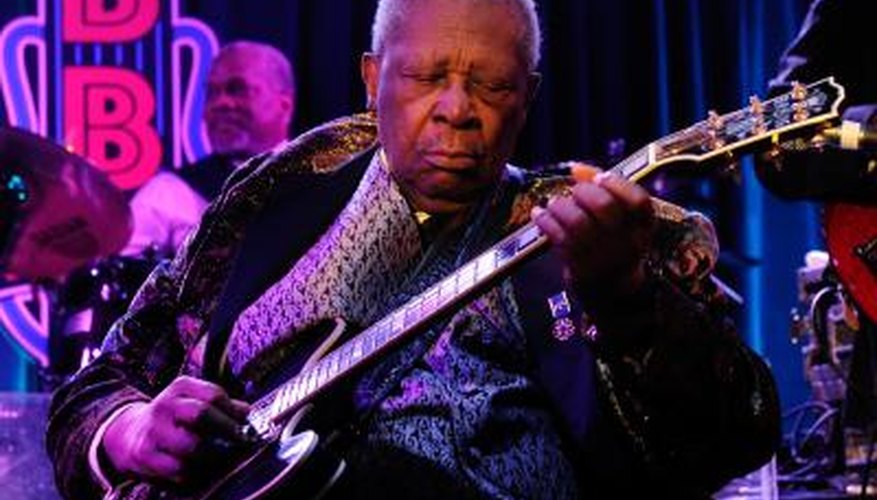Originating as part of the African-American heritage in the South, blues music combines African music traditions with western instruments. This hybrid style has always had a distinct feel built on several key musical elements. These elements have worked together for more than a century to give the blues a sound unlike any other music genre.
Rhythmic Elements
In Blues music, drums are used not only to keep time, but also to help provide a feeling of tension in a song. This is achieved by placing an emphasis on the backbeat, or the "off-beat." A common blues rhythm that uses this emphasised backbeat is a "shuffle beat." This shuffle beat works by using a "pre" beat before each beat in a four count.
- In Blues music, drums are used not only to keep time, but also to help provide a feeling of tension in a song.
- A common blues rhythm that uses this emphasised backbeat is a "shuffle beat."
Lyrical Elements
The lyrical form of blues started with having a single lyric line repeat three times. Over time, this turned into the standard format of having a single line repeat once, and then be followed by another single line. Taking its roots from storytelling, the lyrics in blues music often provide a narrative. The lyrical themes often deal with hardship and injustice. Subjects such as relationships gone wrong, poverty, substance abuse, violence and political dissent are very common.
- The lyrical form of blues started with having a single lyric line repeat three times.
Instrumental Elements
Like the drums, the other instruments used in blues work together to create tension, followed by release. Guitar, harmonica and piano are some of the other primary instruments used in this genre. The guitar usually works along with the vocals in the "calling" or leading role, while an instrument such as harmonica is used to give the "response." Occasionally, the harmonica can be used in the lead role instead.
- Like the drums, the other instruments used in blues work together to create tension, followed by release.
- The guitar usually works along with the vocals in the "calling" or leading role, while an instrument such as harmonica is used to give the "response."
Structural Elements
Blues songs usually have a 12-bar structure, which is separated into three segments of four bars. A 12-bar structure is generally made up of three chords, of which the main notes are based on the first, fourth and fifth notes of an eight-note scale. Blues music also makes use of slightly flatted notes, also known as "blue notes." Blues songs are also usually played in a 4/4 time signature, with four beats in a measure and each crotchet equalling one beat.
- Blues songs usually have a 12-bar structure, which is separated into three segments of four bars.
- Blues songs are also usually played in a 4/4 time signature, with four beats in a measure and each crotchet equalling one beat.
